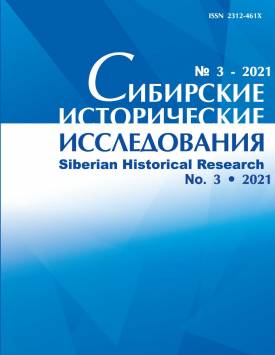Dynamics of the formation of physical development and reproductive structure of Kalmyks
Adaptation of nomadic groups of Kalmyks on the territory of the Russian Federation attracts the attention of researchers by the complexity and ambiguity of social and biological processes accompanied transition to a sedentary lifestyle in new environmental conditions. Analysis of the physical development of children and adults, fertility, morbidity, conditions of living, nutrition of the population of the Kalmyk Region in 1925 revealed a slow growth rate with a fluctuating level and some decrease in physical development. Taking these indicators as a starting point, we conduct a study of the dynamics of the formation of anthropogenetic features of physical development and parameters of the reproductive structure of rural populations of Kalmyks from 1925 to 2014. The analysis includes Torguts of Lagansky, Derbets of Tselinny, Buzavs of Gorodovikovsky districts of Kalmykia Republic. The results indicate that there have been profound socio-economic changes, acceleration processes.Ageneral secular trend has been manifesting in a sharp increase in growth by 8.9 cm. and changes in other physical development indicators inKalmyks since the 1970s. In terms of weight and chest circumference, there is a tendency to increase, except for the chest indicator (the ratio of chest circumference to height). This indicates a harmonious growth and development that does not change the basics of the brachymorphic type of body structure. In rural populations, there was a demographic transition from the natural mode of reproduction to a regulated birth rate. The average age of the onset of menarche is 13.9±0.07 years old, the age of the first child birth is 23.5±0.18, of the last child birth is 31.3±0.26, climacterium comes at 47.8±0.23 years old. A pronounced gap between socially determined boundaries and the physiological duration of the reproductive period is revealed. In populations, there is a regulated type of birth rate, which is more characteristic for the urban population, with social pressure associated with the proportion of abortions. The authors propose a hypothesis that explains the reproductive compensation, which proceeds according to the type of reduction of embryonic losses, developed in generations by the evolutionary trend of biological fitness for nomadic life.
Keywords
Kalmyk anthropology, demography, fertility, reproductive health, morbidityAuthors
| Name | Organization | |
| Spitsyna Nailya K. | Institute of Ethnology and Anthropology, Russian Academy of Sciences | nailya.47@mail.ru |
| Balinova Natalia V. | Research Center for Medical Genetics | balinovs@mail.ru |
References

Dynamics of the formation of physical development and reproductive structure of Kalmyks | Sibirskie Istoricheskie Issledovaniia – Siberian Historical Research. 2021. № 3. DOI: 10.17223/2312461X/33/6
